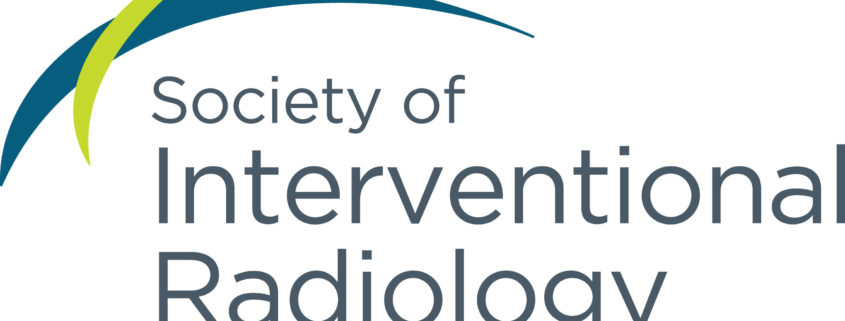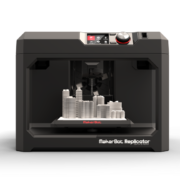3D Printing innovations in healthcare
Innovative Ideas3-D printing offers innovative method to deliver medication
Interventional radiologists use 3-D printers to develop personalized medical devices that can deliver antibiotics and chemotherapy in targeted manner
Mar 03, 2015, 05:39 ET from Society of Interventional Radiology
ATLANTA, March 3, 2015 /PRNewswire-USNewswire/ — 3-D printing could become a powerful tool in customizing interventional radiology treatments to individual patient needs, with clinicians having the ability to construct devices to a specific size and shape. That’s according to a study being presented at the Society of Interventional Radiology‘s Annual Scientific Meeting. Researchers and engineers collaborated to print catheters, stents and filaments that were bioactive, giving these devices the ability to deliver antibiotics and chemotherapeutic medications to a targeted area in cell cultures.
“3-D printing allows for tailor-made materials for personalized medicine,” said Horacio R. D’Agostino, M.D., FSIR, lead researcher and an interventional radiologist at Louisiana State University Health Sciences Center (LSUH) in Shreveport. “It gives us the ability to construct devices that meet patients’ needs, from their unique anatomy to specific medicine requirements. And as tools in interventional radiology, these devices are part of treatment options that are less invasive than traditional surgery,” he added.
Using 3-D printing technology and resorbable bioplastics, D’Agostino and his team of biomedical engineers and nanosystem engineers at LSUH and Louisiana Tech University developed bioactive filaments, chemotherapy beads, and catheters and stents containing antibiotics or chemotherapeutic agents. The team then tested these devices in cell cultures to see if they could inhibit growth of bacteria and cancer cells.
When testing antibiotic-containing catheters that could slowly release the drug, D’Agostino’s team found that the devices inhibited bacterial growth. Researchers also saw that filaments carrying chemotherapeutic agents were able to inhibit the growth of cancer cells.
“We treat a wide variety of patients and, with some patients, the current one-size-fits-all devices are not an option,” added D’Agostino. “3-D printing gives us the ability to craft devices that are better suited for certain patient populations that are traditionally tough to treat, such as children and the obese, who have different anatomy. There’s limitless potential to be explored with this technology,” he noted.
The research team is also able to print biodegradable filaments, catheters and stents that contain antibiotics and chemotherapeutic agents. These types of devices may help patients avoid the need to undergo a second procedure or treatment when conventional materials are used.
D’Agostino believes that this early success with 3-D-printed instruments in the lab warrants further studies, with the goal of receiving approval to use these devices in humans. D’Agostino also sees an opportunity to collaborate with other medical specialties to deliver higher-quality, personalized care to all types of patients.
Abstract 13: “3-D printing antibiotic and chemotherapeutic eluting catheters and constructs,” J.A. Weisman, D.H. Ballard, H. D’Agostino, Louisiana State University Health Shreveport; J.A. Weisman, U. Jammalamadaka, K. Tappa, D.K. Mills, biomedical engineering, Louisiana Tech University, Ruston; J.C. Nicholson, C.G. Wilson, nanosystems engineering, Louisiana Tech University, Ruston, SIR Annual Scientific Meeting, Feb. 28–March 5. This abstract can be found at www.sirmeeting.org.
About the Society of Interventional Radiology
The Society of Interventional Radiology is a nonprofit, professional medical society representing more than 5,600 practicing interventional radiology physicians, scientists and clinical associates, dedicated to improving patient care through the limitless potential of image-guided therapies. SIR’s members work in a variety of settings and at different professional levels—from medical students and residents to university faculty and private practice physicians. Visit sirweb.org. Follow SIR on Twitter at @SIRspecialists.
About SIR’s Annual Scientific Meeting
The Society of Interventional Radiology is holding its 40th Annual Scientific Meeting Feb. 28–March 5 at the Georgia World Congress Center in Atlanta. SIR 2015—the world’s largest and most comprehensive interventional radiology educational experience—spotlights breakthrough treatments that harness the power of image-guided therapies. Follow SIR on Facebook and Twitter and use #SIR15ATL to keep up with news from the meeting.
About interventional radiology
Clinicians in the field of interventional radiology pioneered minimally invasive, image-guided treatment, which reaches the source of a medical problem through blood vessels or directly through a tiny incision in the skin to deliver a precise, targeted treatment. Interventional radiology treatments performed by board-certified experts can deliver solutions with less risk, less pain and shorter recovery time than traditional surgery. These treatments are delivered in collaboration with the patient’s care team. The specialty was founded in the early 1960s. Today interventional radiology has become synonymous with modern medicine.
Logo – http://photos.prnewswire.com/prnh/20100127/SIRLOGO
SOURCE Society of Interventional Radiology










